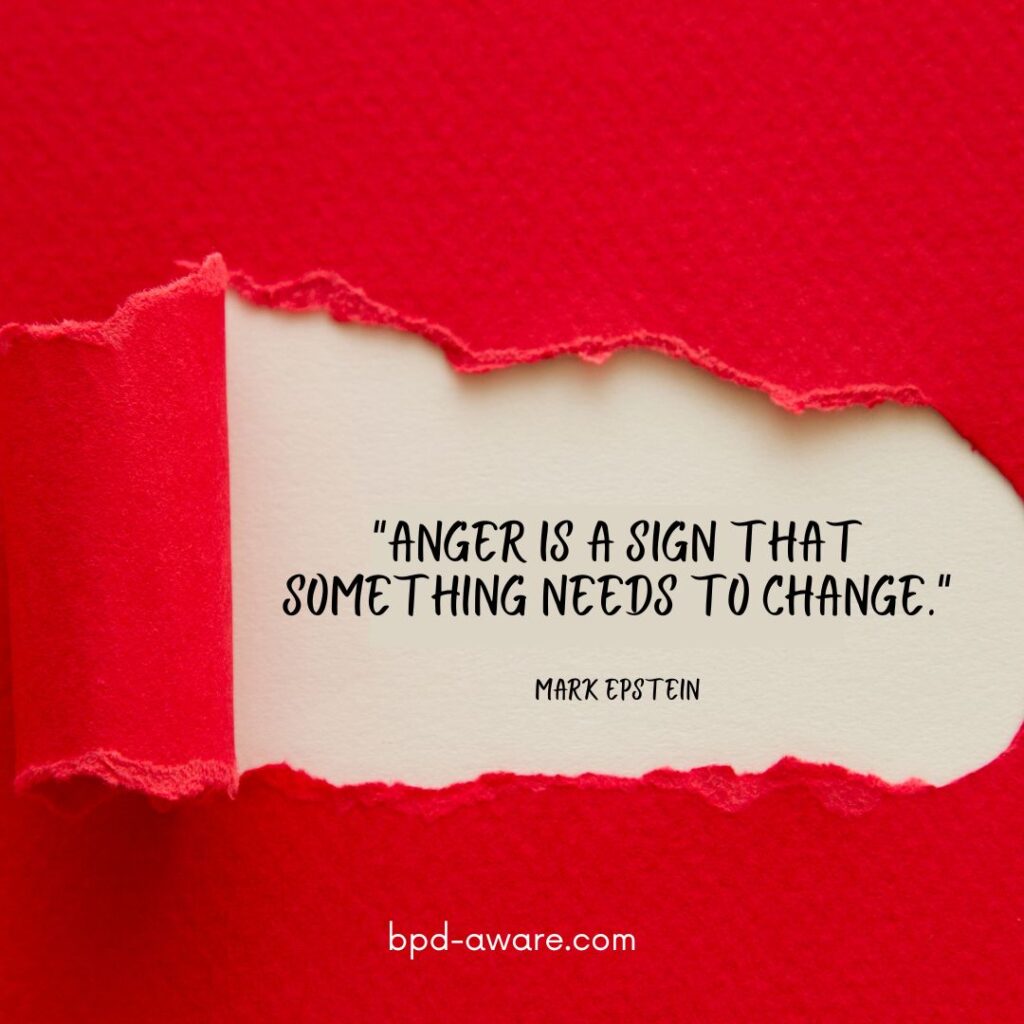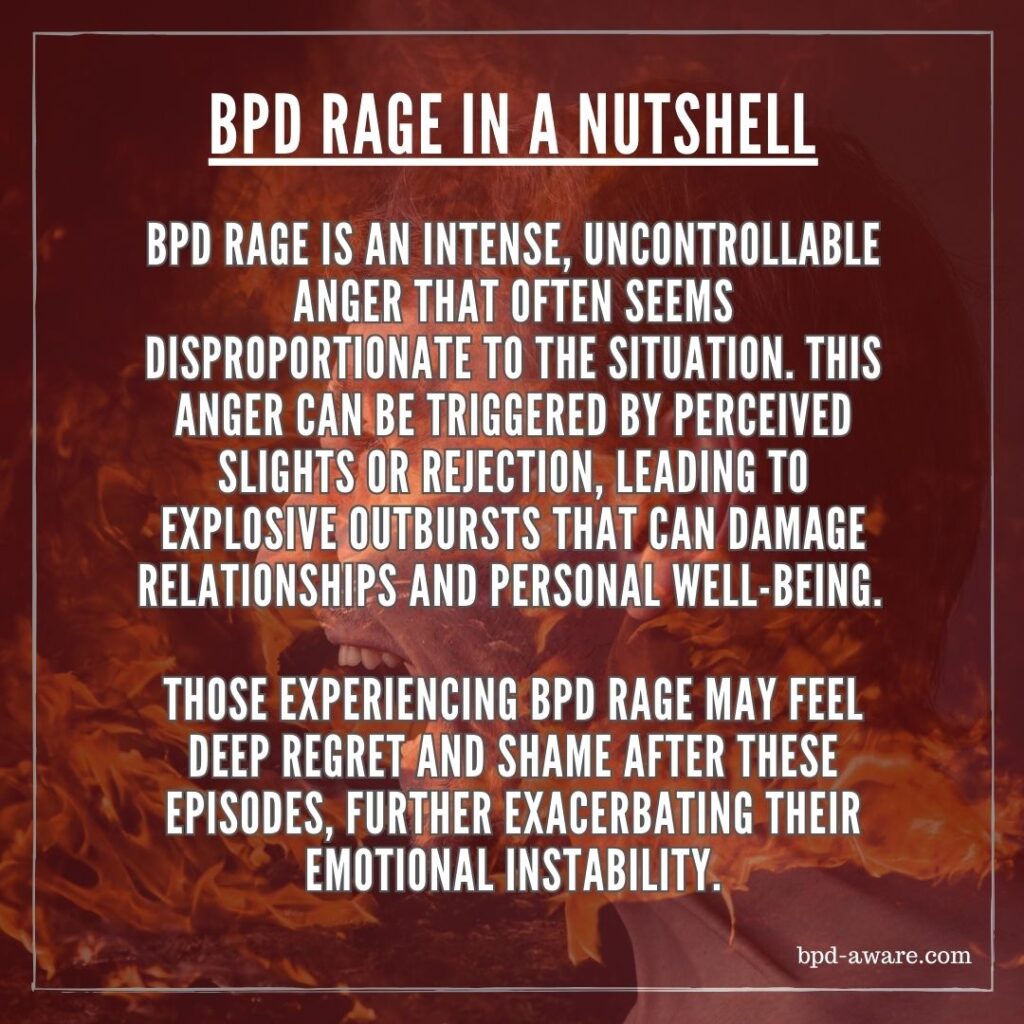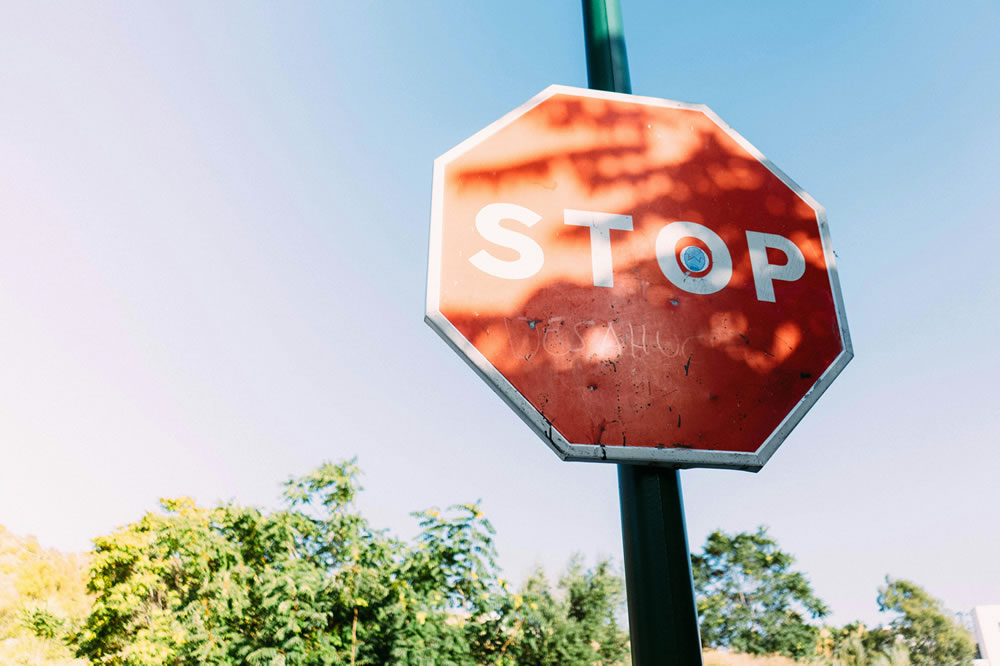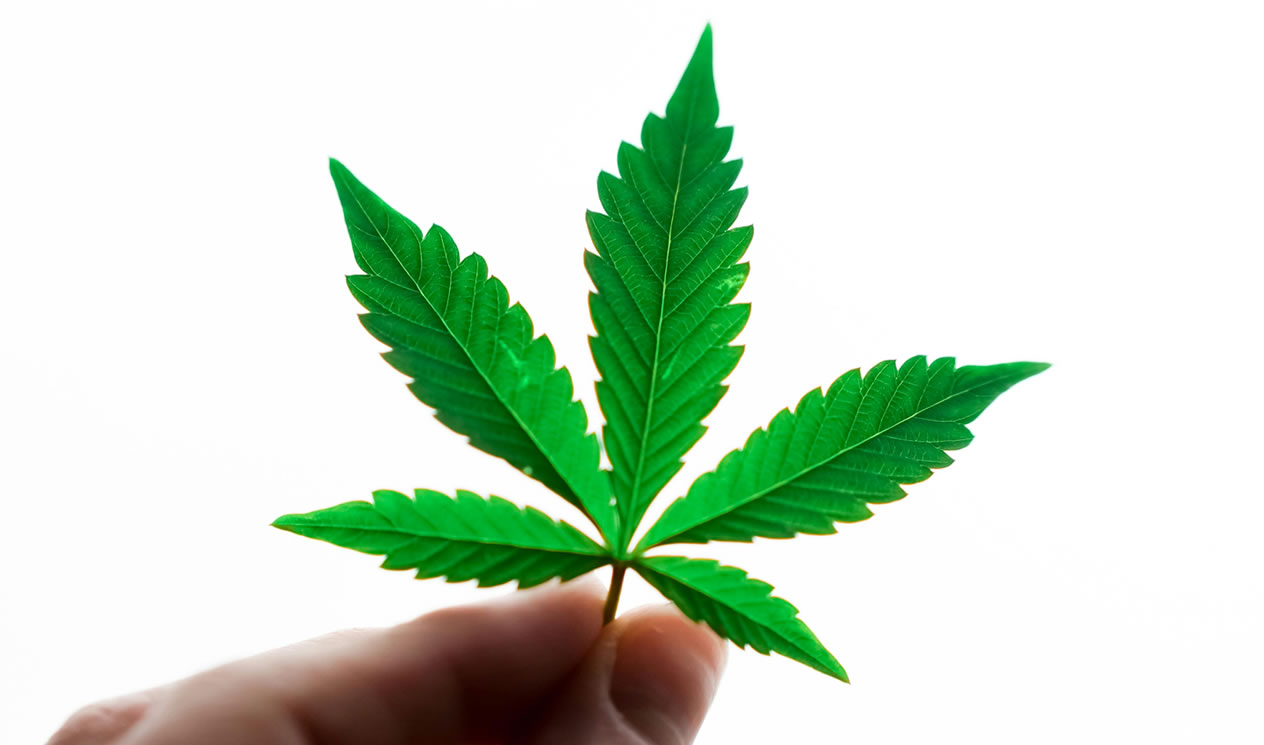There are nine core symptoms of Borderline Personality Disorder (BPD), one of which is difficulty controlling anger. The anger that can brew in someone with BPD can perhaps more accurately be described as a rage as it can be much more volatile and unpredictable compared to typical anger as people with BPD tend to experience emotions much more intensely than the average person.
Rage is not only a heightened form of anger but it is deeply tied to many of the other core symptoms and common triggers associated with BPD, including:
Fear of Abandonment: Many people with BPD have an intense fear of abandonment, which can manifest in many ways. One of the ways it can manifest is through rage when the sufferer feels threatened by the possibility of rejection or separation.
Emotional Regulation: It’s common for people with BPD to have a great deal of difficulty regulating their emotions, which can lead to explosive expressions of anger when they are experiencing intense feelings.
Emotional Vulnerability: On top of difficulties with emotional regulation, most people with BPD are also emotionally vulnerable. They experience intense emotional responses to perceived slights or criticism, which can lead to inappropriate outbursts of anger.
Impulsivity: Another core symptom of BPD is impulsivity. Some people with BPD will act impulsively without considering future consequences. They then experience explosive anger as they feel blindsided by the negative impacts of their actions.
Self-Identity Issues: Struggles with self-identity can lead to feelings of frustration, which may manifest as anger in some people with BPD.
The Types of BPD Rage
Like most aspects of Borderline Personality Disorder, rage can manifest itself in several ways. This includes outward expressions of anger towards other people, self-directed anger leading to self-destructive behavior, and passive-aggressiveness. Here, we’ll explain a little more deeply how each type of BPD rage can manifest.
Externalized Rage
Externalized rage is when the person with BPD directs their intense feelings of anger at the outside world. This can be towards people, animals, or objects and may include verbal outbursts, physical aggression, or social aggression. Social aggression involves trying to harm someone’s relationships or career by spreading malicious rumors about them.
Internalized Rage
Internalized rage is when someone directs anger inward, at themselves. While this might sound preferable to externalizing rage, it can be harmful to both the individual’s mental and physical well-being. Examples of internalized rage include self-harm, self-sabotage, and self-loathing.
Passive-Aggressive Rage
You might not necessarily associate passive-aggressive behavior with rage but it can be a stealthy way to mask rage while causing harm to the self or others. Forms of passive-aggressive behaviors include procrastination, withholding vital information, giving someone the silent treatment, and general sullen behavior.

What Triggers a BPD Rage?
The triggers for entering a BPD rage can vary from person to person. It’s also important to note once more that not everyone with Borderline Personality Disorder enters rage states or has issues with anger management.
However, there are several common scenarios and situations which may lead to rage in some people with BPD:
Perceived Rejection or Abandonment: Many people with BPD are hypersensitive, particularly to perceived rejection or abandonment. As mentioned earlier, fear of abandonment is a common symptom of BPD. Even small or imagined signs of rejection or abandonment can trigger rage in some people with BPD. This can include things like not responding to messages, canceling or changing plans at the last minute, or not being invited somewhere.
Interpersonal Conflict: Arguments or conflicts, even small or imagined ones, can quickly grow and intensify inside the mind of someone with BPD. Even a minor criticism can trigger a rage episode in some people with BPD.
Stressful Life Events: High-stress situations such as the loss of a loved one, pressure at work, or family turmoil may all bring about rage episodes.
Feeling Trapped: In situations where the person with BPD feels trapped and like they don’t have any control, they might become like the classic image of a cornered animal and come out fighting – possibly quite literally.
Perceived or Real Failure: People with BPD often take failure, whether real or perceived, particularly to heart. The feeling of invalidation can lead to a rage episode.
Emotional Overwhelm: Living with BPD often feels like your emotions are turned up to eleven at all times. This can understandably be overwhelming. When overwhelmed, it can feel as though you’re being wound up like a Jack-in-a-box until eventually, you explode in a fit of rage.
What Does a BPD Rage Feel Like?
Experiencing a BPD rage is an intensely emotional, overwhelming, and distressing experience. This can be true for both the sufferer of BPD and anyone around them at the time they have a rage episode.
A BPD rage has three separate stages: the build-up, the rage, and the aftermath. With each stage comes a multitude of different feelings and emotions.
In the build-up to the rage episode, someone with BPD might begin to feel particularly tense and anxious. They may become more sensitive than normal to triggers or perceived threats. Some may even begin to quite literally feel the build-up of pressure inside themselves as if something has got to give. They may also begin to feel overwhelmed emotionally or in other aspects of their life. To go back to an earlier analogy, it’s like that Jack-in-the-box when the crank is getting wound tighter and tighter and the tension is rising until…
The BPD rage hits. There is often a “straw that broke the camel’s back” moment where a seemingly innocuous incident triggers the rage. This makes the rage feel disproportionate to the inciting incident but it’s often the result of something else that’s been building.
However the rage manifests itself, and the sufferer doesn’t have control anymore. They have effectively lost control of their emotions and actions until the rage passes. During the rage, they will feel intense emotional pain and could lash out in any direction. There may also be visible symptoms of the rage state such as shaking, crying, sweating, and reddening of the skin.
After the rage can feel just as devastating as the rage itself. Many people who experience these episodes of rage feel a deep sense of regret, shame, and guilt over their loss of control and whatever it is they said or did during their rage. They may also be deeply concerned about the consequences of their actions as they may have acted in a manner that could cost them in one way or another.
Many people report feeling exhausted after a BPD rage, and some also experience depression. Much like a storm, a BPD rage discharges a great deal of energy and it can take quite some time for someone to recover.
There may also be a strong desire within the person with BPD to right any wrongs they may have done while in a rage. This might include apologizing or even love bombing in some cases. They fear potential abandonment and so try to defend themselves against it.
Preventing BPD Rage
Just as there are several types and common triggers of BPD rage, there are also several preventative measures you can take to help reduce the number of rage episodes as well as their magnitude. A multifaceted approach should include such things as therapeutic intervention, skills training, lifestyle modifications, and building a support network. These strategies will help not just with BPD rage, but BPD in general.
Many therapy options work well for people with Borderline Personality Disorder. Dialectical Behavior Therapy is one of the most popular but Schema Therapy, Transference-Focused Therapy, Mentalization-Based Therapy, and Cognitive-Behavioral Therapy can all help treat BPD and its many symptoms, including anger management issues.
Skills training involves things such as mindfulness practices, emotional regulation techniques, and interpersonal effectiveness skills. These combine to help you feel more grounded and aware of your thoughts and feelings while giving you the ability to better cope with negative emotions and communicate with people in a healthy way. We have a selection of DBT skills that you can peruse and follow which might be of benefit to you.
Lifestyle modifications include things like getting regular exercise, getting out in nature, getting high-quality sleep, eating a well-balanced diet, and avoiding illicit substances. Living a healthy lifestyle can greatly reduce the types of emotions that lead to rage episodes.
Finally, having a strong support network around you can provide the emotional support and understanding you need to reduce negative emotions and feelings of isolation. This support can come from friends, family, a therapist, a support group, and online communities.
Never be afraid to ask for help when you need it.

Final Thoughts
With the emotional storm that brews within Borderline Personality Disorder, it’s little surprise that many with BPD struggle with rage. People with BPD experience emotions on an intense level and anger is no different.
The symptoms of BPD can often act as tinder, while triggers act as the spark that sets off this rage. These episodes can be terrifying for both the sufferer and any witnesses of the intense anger, which can cause lasting damage to relationships as well as a great deal of guilt and shame.
For anyone with BPD who struggles with rage, there is hope. There are several treatment options and preventative measures one can take to greatly reduce the number of instances of rage, as well as the severity. With treatment, time, and dedication, there is a path to stability.
The path to stability is not always an easy one to walk. There will, inevitably, be setbacks, but there will also be triumphs. People with BPD can gain control over their emotions, as someone who has recovered from BPD, I’m proof of that.
If you’re struggling with feelings of anger and rage, dedicate yourself to taking that next step on your journey. A step towards control, a step towards stability.
Sources, Resources, and Further Reading
- Understanding BPD Rage: https://www.verywellmind.com/understanding-borderline-anger-425480
- How to Handle Borderline Personality Disorder Rage: https://clearviewtreatment.com/resources/blog/how-to-handle-borderline-personality-disorder-rage/
- The Link Between Borderline Personality Disorder and Anger: https://www.psychologytoday.com/us/blog/overcoming-destructive-anger/202404/the-link-between-borderline-personality-disorder-and-anger
- Borderline Rage: What It Is, Triggers, & How to Manage It: https://www.choosingtherapy.com/borderline-rage/
















